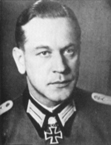Canoerebel
Posts: 21100
Joined: 12/14/2002
From: Northwestern Georgia, USA
Status: offline

|
The following is taken from John's second post in this AAR. It gives both Allied and Japanese additions to the OOB.
In so choosing to do this Yamamoto then changes the 4th Circle Building plan replacing the 3rd and 4th Yamato-Class Battleships with three improved Shokaku-Class CVs and a pair of Kawachi-Class fast Battlecruisers, two Tone-Class CAs, an accelerated Agano-Class deployment, and additional destroyers. Quick, reasonably cheap carrier conversions are moved forward seeing all of the pre-war CVs/CVLs deploy by December 7th or at slightly earlier dates in 1942.
The Japan Naval Air Arm is changed so that everything is staked to the Zero Airframe with a specialization of the Zero into a Land-Based Interceptor as well as CV-Based Fighters. Research and production expansion is achieved by streamlining the air industry (cutting several models) while bringing forward second generation aircraft: Judy, Jill, etc… By great effort the IJNAF deploys nearly all new aircraft on December 7th.
RA 5.0 now brings his ‘vision’ to the IJN’s Land Component. He reorganizes the SNLF units into a Brigade-Sized offensive force and—knowing it will be a war of attrition—converts many Naval Guard into enhanced units with Coastal Defense artillery for a stronger defensive unit. Additional small units are added to the IJN’s Troops and support units better reflecting Yamamoto's foresight into base building, defense, and expansion needs.
The foresight of the Admiral paysoff during 1942 and early-1943 as new ships, aircraft, and ground units enter into the Japanese Order-of-Battle, however, the cost is steep. Though expanded and using modern aircraft many Japanese Naval Air units start with their experience lowered to reflect the dilution of the experienced pilots into new units. Supply and fuel reserves start at a much reduced state. The Japanese MUST take the DEI as fast as possible.
In a major change over the previous versions of Reluctant Admiral, the 3.0 postulates more of Yamamoto’s influence upon the wartime Kaigun. First class destroyers are accelerated and emphasis is shifted to the AA Akizuki-Class at the expense of the more balanced Yugumo’s. Manpower is at a premium within the Fleet so Submarines, Escorts, and ASW forces all see a major retooling reflecting the Japanese quality over quantity belief. Yamamoto chooses the immediately useful projects, including 2nd-class destroyers, fast transports and coastal defense fleet, at the expense of large destroyers and subs offered by the stock, historical choice.
It should be noted that not all the changes are for the Japanese. The Allies see continued major changes in their starting locations, new air units, several ground units, a CLAA conversion for the Omaha-CL, a pair of additional CVLs, and options for nearly 10 CVEs. The added warships reflect a ‘stopgap’ counter to the increased Japanese strength found at war’s start.
|
 Printable Version
Printable Version


















 New Messages
New Messages No New Messages
No New Messages Hot Topic w/ New Messages
Hot Topic w/ New Messages Hot Topic w/o New Messages
Hot Topic w/o New Messages Locked w/ New Messages
Locked w/ New Messages Locked w/o New Messages
Locked w/o New Messages Post New Thread
Post New Thread